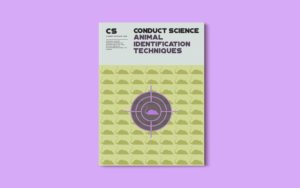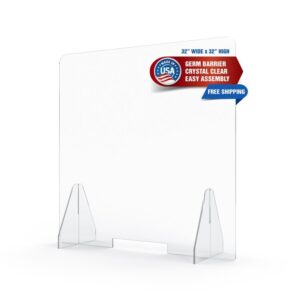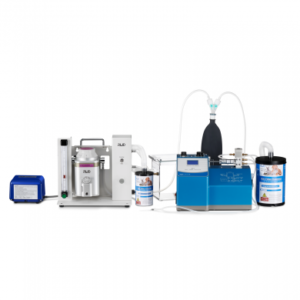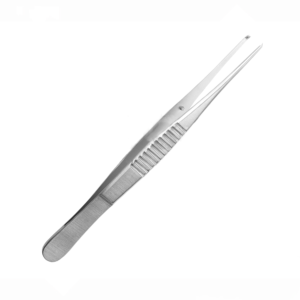Catadioptric Telescopes: Introduction
While both reflecting and refracting models continued improving over the years, advancements in lens technology outside the field of telescopy led to the development of the catadioptric telescope – a combination of refracting (lenses) and reflecting (mirrors) optics. To provide an example, in 1820, physicist Augustin-Jean Fresnel developed the prominent catadioptric lighthouse reflector, in 1859 scientist Leon Foucault used catadioptric optics to build a microscope, and in 1876 officer Alphonse Mangin developed the so-called Mangin mirror integrated into today’s catadioptric units. Additionally, two main models of telescopes enhanced the design of contemporary catadioptric telescopes: the catadioptric dialytes (with the Hamiltonian telescope being the first dialyte unit patented in 1814) and the Schupmann medial telescope. Note that in 1931, optician Bernard Schmidt introduced the first full-diameter corrector plate to correct spherical and chromatic aberration in telescopes. Now popular catadioptric models include Schmidt–Cassegrain, Maksutov, Maksutov-Cassegrain, Argunov-Cassegrain, and Klevtsov-Cassegrain.
Choosing a Catadioptric Telescope: Factors to Consider
Given the interest in telescopes and research, it’s no surprise many people invest in telescopes. Telescopes can be used to study scenery, animals, and celestial objects. When it comes to amateur astronomy, telescopes can be used to study bright celestial objects, such as planets and the fascinating craters of the Moon, as well as deep-sky objects, such as distant nebulae and galaxies. Catadioptric units, in particular, are popular among astronomy lovers as they are compact and powerful at the same time. We should note that the three companies that popularized Schmidt-Cassegrain and Maksutiv-Cassegrain telescopes were Questar created by Lawrence Braymer in 1950, Celestron founded by Tom Johnson, and Meade Instruments started by John Diebel in 1972. Now, as stated above, popular catadioptric models include Schmidt–Cassegrain, Maksutov, Maksutov-Cassegrain, Argunov-Cassegrain, and Klevtsov-Cassegrain.
Because of the wide variety of units and brands on the market, choosing a catadioptric model can be difficult. Users should consider three main factors before purchasing a telescope:
- Requirements
- Specifications
- Total costs
Requirements: Users should refine their requirements and familiarize themselves with the basics of telescopes. As stated above, there are three types of telescopes: 1) refracting telescopes that employ lenses; 2) reflecting telescopes that consist of mirrors; 3) catadioptric telescopes that have both mirrors and lenses. Catadioptric models, in particular, use a combination of optical parts. Their unique design allows the folding of light within the unit without diminishing its focal length; it also eliminates various optical problems (e.g., coma, spherical aberration, and chromatic aberration).
Also, buyers should decide what they’ll be using the telescope for (e.g., terrestrial, nautical, or astronomical use). When it comes to amateur astronomy, users should decide what objects they want to see (e.g., deep-sky or bright objects) and where they’ll be viewing them (e.g., light-polluted or rural areas).
Specifications: Before purchasing a catadioptric telescope, users should consider two major specifications: aperture and magnification. Aperture refers to the diameter of the telescope’s main optical part through which light passes; a bigger aperture is ideal for observing deep-sky objects (e.g., galaxies, nebulae, clusters). As explained earlier, catadioptric units use both lenses and mirrors to create and focus a beam of light, resulting in sharp and detailed images.
Magnification is another vital characteristic to consider. However, excessive magnification can lead to blurry images, with magnification ranges of up to 300X being the maximum useful magnification. Note that a unit’s power can be adjusted by changing its eyepieces.
Total costs: Catadioptric or compound units are highly versatile and compact products as they use both mirrors and lenses to collect and focus light within a small tube. This optical configuration supports their compact and portable design and makes them easy to use and maintain. Yet, aperture, materials used, and additional features can increase the cost of a catadioptric unit. Large and computerized models, for instance, are more costly.
Additionally, telescope accessories, such as mounts, eyepieces, tripods, and carry bags, can increase the final cost of a catadioptric unit.
Best Catadioptric Telescopes
With diverse features and compact design, catadioptric telescopes are highly popular among seasoned users, astronomy lovers, outdoor enthusiasts, and young learners. Some of the most popular models are Schmidt-Cassegrain, Maksutov-Cassegrain, Schmidt-Astrograph, and Schmidt-Newtonian. Based on different specifications and user reviews, here are the best catadioptric models available on the market:
1. Celestron CPC 1100 StarBright XLT GPS Schmidt-Cassegrain 2800 mm
Celestron CPC 1100 StarBright XLT GPS Schmidt-Cassegrain 2800 mm is one of the best catadioptric models on the market. The unit features a 2800 mm aperture, a computerized altazimuth mount, a 9×50 finderscope, and premium optical coatings. With an internal GPS system and database of 40,000 celestial objects, this sophisticated catadioptric telescope provides excellent alignment and tracking accuracy. Additionally, Celestron CPC 1100 StarBright XLT GPS Schmidt-Cassegrain 2800 mm comes with a sturdy tripod, which facilitates both night sky viewing and astrophotography.
2. Celestron CPC 800 GPS (XLT) Computerized Telescope
Celestron CPC 800 GPS (XLT) Computerized Telescope is another powerful unit with a focal length of 2032 mm, advanced StarBright XLT optics, and SkyAlign alignment technology. Additionally, this 8-inch Schmidt-Cassegrain telescope comes with a computerized mount with GPS and a remote hand-control holder. Celestron CPC 800 GPS (XLT) Computerized Telescope is an ideal present for both astronomy experts and beginners.
3. Celestron NextStar Evolution 8 Telescope
Celestron NextStar Evolution 8 Telescope has an aperture of 203 mm, a focal length of 1500 mm (focal ratio of f/10), and 480X maximum magnification. The unit is equipped with StarBright XLT Multicoated Optics, a stainless steel tripod, and a single fork arm altazimuth mount. With numerous advanced settings, Celestron NextStar Evolution 8 Telescope is ideal for viewing both bright celestial objects (e.g., planets) and deep-sky clusters (e.g., nebulae).
4. Celestron 22097 NexStar 127 SLT Mak Computerised Telescope
Celestron 22097 NexStar 127 SLT Mak Computerised Telescope is a 127 mm Maksutov-Cassegrain telescope with a focal length of 1500 mm. The unit is equipped with a computerized altazimuth mount, StarPointer finderscope, and NexStar’s hand control. Additionally, its design ensures quick setup and straightforward use. Celestron 22097 NexStar 127 SLT Mak Computerized Telescope is an ideal product for exploring the secrets of the night sky.
5. Celestron CPC 925 GPS Computerized Telescope
Celestron CPC 925 GPS Computerized Telescope is a wonderful product equipped with SkyAlign alignment technology, 40,000 object database, internal GPS, hand control software, enhanced computerization, and quality optics. Note that this Schmidt-Cassegrain telescope has an aperture of 235 mm. Celestron CPC 925 GPS Computerized Telescope is simply perfect for both stargazing and astroimaging.
6. Celestron 11049 NexStar 4 SE Computerised Telescope
Celestron 11049 NexStar 4 SE Computerised Telescope is an advanced Maksutov-Cassegrain model with an aperture of 102 mm (4.02 inches). The unit comes with a red-dot StarPointer finderscope, 25mm Plossl eyepiece, astronomy software, hand control, and 40,000 object database. As users can easily connect their DSLR or astronomical camera, this telescope is great for astroimaging. With its orange tube, Celestron 11049 NexStar 4 SE Computerized Telescopes makes an exciting gift choice for both experts and beginners.
7. Celestron 11068 NexStar 6 SE Computerised Telescope
Celestron 11068 NexStar 6 SE Computerised Telescope is another powerful catadioptric product. The unit has a 150 mm aperture, ideal for viewing planets and deep-sky objects. Its compact design makes it an ideal addition to a camping trip or an outdoor adventure. Moreover, with Celestron’s iconic “orange tube” and single fork arm design, Celestron 11068 NexStar 6 SE Computerized Telescope can make a beautiful gift for any astronomy lover.
8. Orion 10022 StarMax 90mm TableTop Maksutov
Orion 10022 StarMax 90mm TableTop Maksutov is a great grab-and-go tabletop Maksutov-Cassegrain unit. With its 90 mm aperture, the telescope provides sharp views of bright planets and deep-sky objects. The model comes with two 1.25-inch eyepieces (25mm and 10mm focal lengths), EZ Finder II reflex, and a 90-degree mirror diagonal to facilitate viewing. Given its beautiful design, Orion 10022 StarMax 90 mm TabelTop Maksutov is also a magnificent aesthetic unit.
9. Levenhuk Strike 1000 PRO
Levenhuk Strike 1000 PRO is a Maksutov-Cassegrain telescope with an aperture of 102 mm and a focal length of 1300 mm. Note that this unit is powerful and light at the same time. The telescope comes with numerous features: a German equatorial mount, an adjustable tripod, four planetary filters, lunar and solar filters, a 2X Barlow lens, a red-dot finderscope, and a diagonal mirror. The kit also contains books and DVDs, ideal for astronomy lovers who want to dive into the secrets of the night sky.
Taking Care of a Telescope
- Taking care of telescopes is essential. Always consult instruction manuals regarding assembling and use to ensure an accurate and long life. Note that catadioptric units may require more frequent optical alignment when compared to refractor telescopes.
- Transport your unit accordingly. A reliable carry bag, for instance, is a must-have telescope accessory. It’s important to mention that catadioptric units can get heavier as their aperture increases.
- Maintain and clean your unit with care. Avoid touching its optical components with hands but use compressed gas, surgical cotton, lens tissues, or solution instead.
- Catadioptric systems have complex moving parts compared to reflecting and refractor units, so avoid dissembling your unit.
- Familiarize yourself with your new catadioptric telescope during the day. Never look directly at the sun to avoid eye damage!
- Last but not least, amateur astronomers should invest some time in studying maps of the night sky to know what they are viewing.
Catadioptric Telescopes: Conclusion
Catadioptric units are highly popular among astronomy lovers. Catadioptric or compound telescopes are one of the three main types of telescopes available on the market: refractors, reflecting units, and catadioptric instruments. Catadioptric telescopes employ both refractive optics (lenses) and reflective optics (mirrors) to produce enlarged images of distant objects. As stated above, it was Questar, Celestron, and Meade Instruments that popularized Schmidt-Cassegrain and Maksutiv Cassegrain models among stargazers. With numerous features, large aperture, high optical quality, and compact design, compound telescopes are sought-after units.
Yet, choosing a catadioptric telescope can be a daunting endeavor. Buyers should consider three main factors: requirements, specifications, and budget. Aperture, magnification, and optical quality are also essential factors to consider. Note that large and computerized models are usually more costly than other products. Purchasers should also be aware of the fact that taking care of telescopes is essential to guarantee long use. Catadioptric units, in particular, have complex optical and moving parts, so dissembling them is not recommended.











